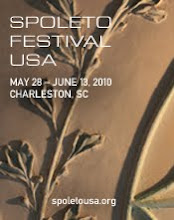
“Contemporary Conversations: The State Art Collection” and the recently-published catalog covering art added to the collection during the past 20 years have been the let-downs of the 2009.
The two-part exhibition culled from the 500-work collection maintained by the S.C. Arts Commission and the catalog miss almost every opportunity to connect to the viewer. (The second part at the 701 Center for Contemporary, through Dec. 6, at least looks much better than the first part. For a review of the first show look at the Oct. 18 posting on this site.)
The catalog I thought might illuminate the collection – who are they artists, what defines the collection and South Carolina art, how were the artists influenced by this place and how did it impact them? Nope, it is just as vague as the exhibitions and unlike the shows it will be with us for two decades rather than two months. (An earlier catalog covers the works acquired by the state from '67 to '87.)
These shows and catalog got me thinking about something else the Arts Commission hasn't addressed: looking at what's in and, more importantly, not in the collection. The collection has works by artists who just aren’t very good nor important in the big scheme. Some artists are represented in the collection by old work, while they are still creating good or better art. (Phil Moody and Robert Courtright come to mind.) Their newer art should be in the collection as well.
But the flaw is the truly important artists who aren’t in the collection at all. Here are a few:
Virginia Scotchie, (top image) probably the most active, successful and well-known artist who lives in South Carolina. Scotchie, who does ceramic sculptures, has exhibitions, gives workshops and lectures, and teaches all over the world (as well as at USC.)
Joe Walters makes sculptures (above) and works on paper based on animals and plants. The Charleston artist has had significant gallery representation, has works in many museums and has received numerous public, private and corporate commissions, which is surprising considering how edgy his work is.

Another Charleston resident, Colin Quashie, makes tough and often hilarious artworks that address race, gender and class and he has a good track record of shows.(right)

Tyrone Geter of Columbia who has pushed drawing in new directions and he also takes on
race in an artful
way.He has a whole
other life as a successful book
illustrator as well. (left)

Shepard Fairey, left, is the Charleston native
who first made his mark with his “Obey Giant”
underground public art campaign, and who really
burst on the international scene
with his Barack Obama “Hope”
poster (and the ensuing lawsuit
over his use of the Obama image.)
Russell Biles of Greenville (below) does quite edgy and darkly funny figurative ceramic sculptures. His art often takes on political and social issues ranging from war to child abuse using pop culture images. His work has been shown internationally (and in the National Enquirer!)
These are not artists who recently arrived or are hermits; all have been active, engaged and mostly excellent artists working (except for Fairey) in South Carolina for 10 to 20 years. They are a few of the obviously missing and obviously important artists - I’m sure there are more. (I've asked the commission for its missing in action artist list, but they won't tell me. I also have to say that the Arts Commission has re-vamped its art acquisition committee which may makes things better.)
Creating the state collection is an imperfect process – art and artists are selected for a variety of reasons. But I can’t think of a single one these artists don’t fulfill.















This comment has been removed by a blog administrator.
ReplyDeleteThis comment has been removed by a blog administrator.
ReplyDeletewhy is it so difficult for SC to recognize and celebrate its best living artists? Why is SC Arts Commission so in love with Wim as he wrapped around his pinky? Conflict of interest here I believe.....
ReplyDelete